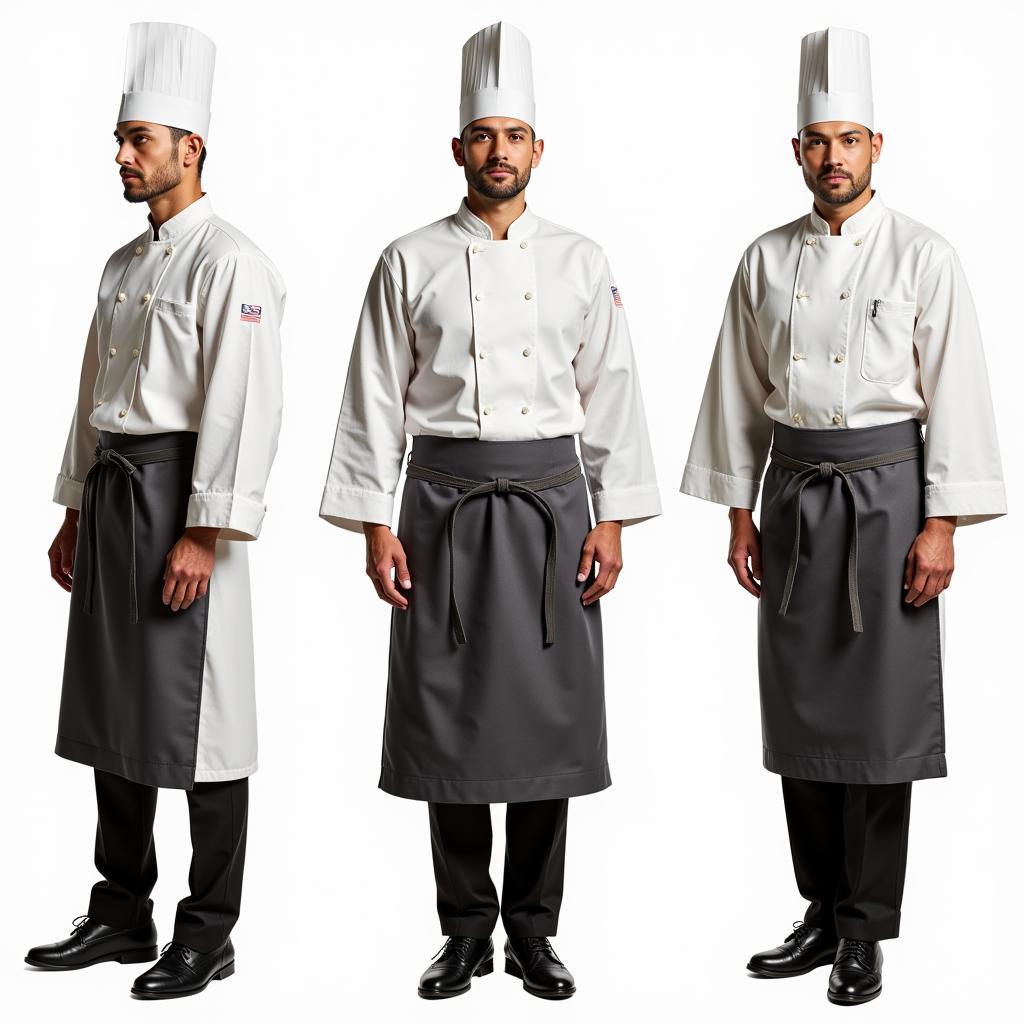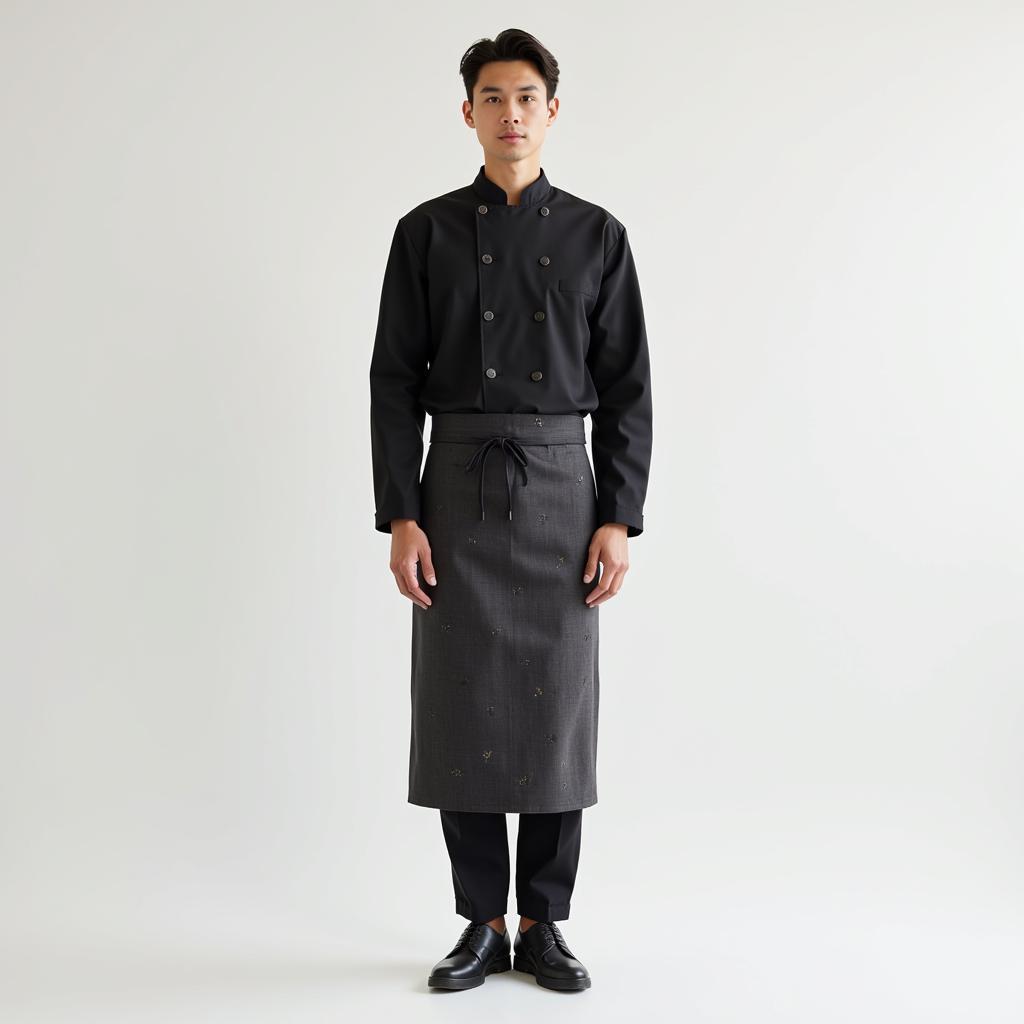Japanese Chef Outfit: A Complete Guide to Traditional and Modern Styles
October 15, 2024The world of culinary arts is a captivating blend of skill, tradition, and presentation. And nowhere is this more evident than in the meticulous attention to detail given to a Japanese Chef Outfit. More than just clothing, these garments are a symbol of respect for the culinary craft, reflecting centuries of tradition and a commitment to excellence.
 Traditional Japanese Chef Outfit Components
Traditional Japanese Chef Outfit Components
The History and Significance of Japanese Chef Attire
The history of the Japanese chef outfit can be traced back to the Edo period (1603-1868), a time of significant cultural development in Japan. During this era, cooking transitioned from a necessity to an art form, and with this shift came a greater emphasis on the chef’s appearance.
Early chef outfits were often simple, consisting of a loose-fitting kimono-like garment and a headband. However, as culinary arts flourished, the outfits evolved, incorporating elements of samurai attire as a symbol of status and discipline.
 Evolution of Japanese Chef Outfit from Edo to Modern
Evolution of Japanese Chef Outfit from Edo to Modern
Key Components of a Traditional Japanese Chef Outfit
The traditional Japanese chef outfit, known as a “wa-shoku” uniform, consists of several key pieces:
- Toque Blanche (Chef Hat): This tall, pleated hat, while a common sight in kitchens worldwide, holds particular significance in Japan. The height of the hat signifies the chef’s experience and rank in the kitchen.
- Katagin (Jacket): Typically double-breasted and made from thick cotton, the katagin is designed for both practicality and symbolism. The overlapping front panels allow for easy adjustment of temperature and provide extra protection from heat.
- Maekake (Apron): A long, rectangular apron tied at the waist, the maekake offers additional protection and serves as a symbol of humility and dedication to service.
- Hachimaki (Headband): Often worn under the toque blanche, the hachimaki absorbs sweat and signifies the chef’s determination and focus.
- Tabi (Split-toe Socks): These traditional Japanese socks, typically white, are designed for comfort and hygiene in the kitchen.
Modern Interpretations and Adaptations
While traditional elements remain deeply respected, modern Japanese cuisine has witnessed the emergence of more contemporary chef outfits. These interpretations often incorporate lighter fabrics, minimalist designs, and subtle nods to Japanese aesthetics.
 Modern Japanese Chef Outfit with Minimalist Design
Modern Japanese Chef Outfit with Minimalist Design
For instance, some chefs opt for a more streamlined jacket, called a “hanten,” which retains the double-breasted style but features a shorter length and slimmer fit. Similarly, contemporary aprons might showcase subtle Japanese patterns or incorporate innovative materials for enhanced functionality.
The Importance of Detail and Presentation
Whether adhering to traditional styles or embracing modern interpretations, one constant remains: the unwavering attention to detail and presentation.
The Japanese chef outfit is meticulously maintained, with every crease and fold reflecting a dedication to order and precision. This commitment extends beyond the garments themselves, encompassing personal grooming and a respectful demeanor within the kitchen.
Conclusion
The Japanese chef outfit is a powerful symbol of culinary tradition, discipline, and artistry. From the symbolic significance of the toque blanche to the practical functionality of the katagin, each element tells a story of dedication and respect for the craft. Whether in a traditional restaurant in Kyoto or a modern fusion kitchen in New York, the Japanese chef outfit continues to command admiration and inspire aspiring culinary artists worldwide.
For expert advice on selecting or customizing your Japanese chef outfit, contact us at:
Phone: +84 915 117 113
Email: [email protected]
Address: To 3 Kp Binh An, Phu Thuong, Viet Nam, Binh Phuoc 830000, Vietnam
Our dedicated team is available 24/7 to assist you.